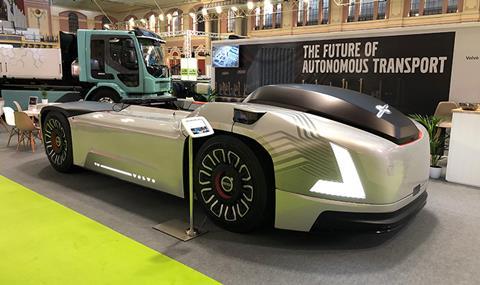
The National Grid is ready to overcome the challenges of recharging large volumes of electric vehicles and so range anxiety need not be a barrier to the widespread adoption of low emissions vehicles, according to Graeme Cooper, project director – electric vehicles at National Grid.
Speaking at the FT Future of Mobility Summit in London this week, Cooper said he was often asked if “the grid” could cope with charging the expected volume of electric vehicles as the UK heads for net-zero carbon emissions by 2050.
“Yes it can,” was his simple answer, though he went on to explain that National Grid ran the high voltage electricity network in England and Wales, with the distribution network operators (DNOs) handling the local power networks.
Cooper likened it to National Grid running the motorways and trunk roads while the DNOs looked after the A and B roads. “But transport operators don’t care – if they are having a problem getting enough power ‘it is the grid’s fault’,” he said.
Current total power demand in the UK is 12% below its all-time peak of 62GWh, and if every vehicle on the roads went fully electric tomorrow it would only add 10% to today’s peak demand.
National Grid’s analysis of the barriers to increased take up of EVs highlighted the upfront cost of the vehicles and range anxiety as the two biggest issues. So the company modelled where charging points would be needed so drivers will be able to recharge EVs during their journeys as well as charging them overnight at home or base.
“En route charging is a small but critical part of solving range anxiety,” said Cooper. “The problem is that most motorway services are on the equivalent of a piece of wet string when it comes to grid connection. So it needs upgrading – but who pays?”
National Grid is a monopoly provider of the high voltage electricity network and high pressure gas grid and is regulated by Ofgem.
Discussions are taking place between the two to determine who should pay – the electricity customer through their energy bills, the EV driver or operator or some other intermediary such as the service area operators or electricity supplier.
“This is a new market and we are having to make the market,” said Cooper. “It needs anticipatory investment and it is not just a case of replacing a diesel or petrol pump with an electric charger.
“This is a big unknown as the regulator has been playing to the same rules for a long time.”
National Grid has identified 54 key nodes where high capacity electricity recharging points can be provided close to the trunk road network – but it is not revealing their locations to avoid property speculation in those areas.
Its modelling also includes the capacity to produce hydrogen from electricity at these 54 locations as it envisages that hydrogen fuel cell as well as battery electric vehicles will require en route refuelling.
“We are technology agnostic,” Cooper said. “We see a need for 8 to 10MW of charging capacity to replicate a fuel filling station.”
The cost of adding the grid infrastructure to deliver this capacity is put at around £800m, which equates to 66p per car per year.
The government also takes £37bn a year in vehicle excise and fuel duty which accounts for 12p per mile of the running cost of a typical car.
Bayliss estimated that an EV would cost 2p per mile to charge so if the government decided to replace lost tax revenue by introducing road tolls at a similar rate of 12p per mile then the running costs of EVs would be very similar to that of a diesel vehicle. “But it will be a brave transport minister who raises the issue of road pricing,” he predicted.
Autonomous trucks are no longer tomorrow’s technology – they are here and working now, according to Volvo Group chief technology officer Lars Stenqvist.
Speaking in an earlier session at the Summit, Stenqvist predicted “autonomous driving will radically shift transport” and pointed out that the technology required was not new, with systems such as lane keeping and stability assist already being used to improve driver safety in today’s vehicles.
And he added: “There will be drivers behind the wheel of commercial vehicles in most applications for the foreseeable future.” This includes driving on public roads and the autonomous trucks of today are doing simple repetitive tasks in closed environments such as container terminals and mines.
But he predicted that when driverless trucks do hit the highways they will be safer, more energy efficient, more productive and need less maintenance, giving a total cost of ownership (TCO) possibly half that of equivalent vehicles with human drivers in control despite the higher upfront cost.
“Autonomous solutions will be more safe than today,” he said. “Volvo has a long heritage on safety and we will never compromise on safety.
“The first autonomous applications will be in commercial vehicles because of the huge gains in TCO.”
Volvo is supplying seven fully autonomous FH16s to move limestone 5km within a mine in Norway. “We will start in confined areas like mines and harbours because the safety case is easier as there are fewer if any people around,” said Stenqvist. “They will operate night and day with no drivers, giving the limestone mine operator a competitive advantage in a tough global market and making the operation safer.”
Volvo has also developed a full electric autonomous tractor unit dubbed VERA which will shortly be set to work as a tug in Gothenburg port’s container terminal.

Stenqvist predicted autonomous trucks would be trialled in dedicated lanes on public roads “soon”, working initially on simple point-to-point transport applications.













